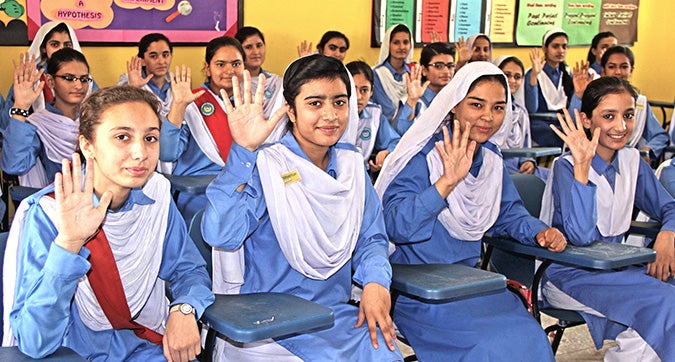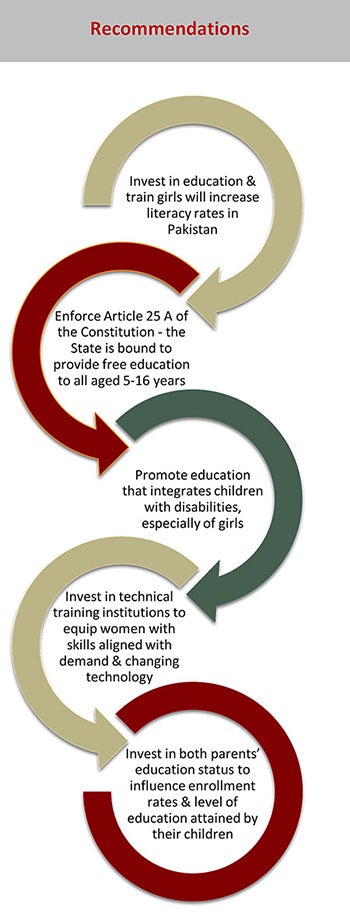(I) – Education

Education is widely accepted as a primary driver of access to greater opportunities in life
Evidence shows that villages with a cohort of at least middle school educated women are more likely to attract resources in the form of school’s trainings, health facilities, employment opportunities, and civic participation.
Investment in Education Receiving the Short End of the Stick
Did you know that only 2 per cent of Pakistan’s GDP is allocated to education? Whilst provincial education budgets as a % of the total budget have increased, 80 per cent of this alarmingly small proportion is spent on salaries and administration, leaving close to zero room for improvement of education quality.
The Parity Problem
The lack of focus on the importance of good education is hitting Pakistani girls the hardest. The number of schools for girls lags far behind that of boys; 60 per cent primary schools, 21 per cent middle and only 14 per ccent high schools are for girls. This partially explains why most girls drop out after primary school. Girls’ entry into puberty brings into play the social norms that restrict their mobility, and the lack of access to girls’ schools create social and physical barriers like distance to school and poverty. Gender parity is only somewhat achieved at university level in the urban areas where girls and boys are enrolled in equal proportions. All in all, since the 2000s up to 2014, there has been a persistent gender gap of 23 per cent in literacy rates in Pakistan.

Skills Training Opportunities Leaving Much to Be Desired
In addition to schools, skills and vocational training centers are an important part of enhancing human capital. In our post devolution context, skills training found a new impetus in Pakistan. Only 11 per cent of women have received technical or vocational training and are often marginalized in terms of the kind of training offered to them. Traditionally, these centers for women have offered courses that reflect their reproductive roles such as sewing garments, sewing, embroidery etc. All of these are low return endeavors. There is a need to link skills training to market demand to produce appreciable results in terms of utilization, generating incomes and poverty alleviation. Recently a growing number of private sector training institutes for women offering short courses in IT skills, graphics and fashion design have emerged in towns and cities.
How Education Frees and Empowers Girls
Education is well known to have positive spillover effects for women on health, nutrition, civic and political participation that extends beyond the individual to the family particularly children. Their earning potential increases, thereby economically empowering them as well as giving them confidence and a higher standing within their home which is measured by their higher involvement and influence in decision making.
To view the status report online/download
Related news
Featured publication
Status Report on Womens Economic Participation and Empowerment
In Pakistan social vulnerability juxtaposed with economic vulnerability keeps women underpaid and overworked, even when they overcome structural and social barriers to seek employment. The near invisibility of women in micro and macroeconomic policies... View/Download
